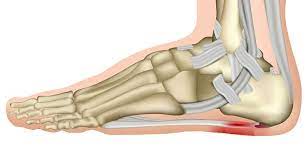Plantar Fasciitis: Finding Relief without Surgery
- heelandtoepodiatry
- Sep 20, 2023
- 2 min read
Introduction
Plantar fasciitis is a common foot condition that causes excruciating heel pain and can significantly affect one's daily life. Fortunately, many individuals can find relief through conservative treatments that don't require surgery. In this blog post, we will explore some effective conservative approaches to managing plantar fasciitis and regaining mobility and comfort.
Rest and Ice
Rest is crucial in the early stages of plantar fasciitis. Reducing weight-bearing activities gives your inflamed plantar fascia a chance to heal. Icing the affected area for 15-20 minutes at a time can help reduce inflammation and relieve pain.
Stretching Exercises
Regular stretching exercises targeting the calf muscles and Achilles tendon can relieve tension on the plantar fascia. Simple stretches like calf stretches against a wall and towel stretches can help improve flexibility and alleviate pain. Perform these stretches multiple times a day for optimal results.
Orthotic Inserts
Custom or over-the-counter orthotic inserts can provide additional arch support, redistributing pressure on the foot and reducing strain on the plantar fascia. These inserts can be placed in your shoes and help maintain proper foot alignment.
Proper Footwear
Investing in supportive footwear with cushioning and good arch support is essential for managing plantar fasciitis. Shoes with a cushioned sole and a well-defined arch can reduce the strain on your feet and promote comfort. Dr. Johnston can guide you through your shoe purchase and provide tips on the proper shoe construction for your foot type.
Night Splints
Night splints are designed to keep your foot dorsiflexed overnight, which helps stretch the plantar fascia and reduce morning pain and stiffness. While they can be uncomfortable at first, many individuals find them beneficial in the long run.
Physical Therapy
A physical therapist can provide specialized exercises and techniques to improve foot strength and flexibility, as well as reduce pain. Physical therapy can also address any biomechanical issues that may contribute to your condition.
Anti-Inflammatory Medications
Non-steroidal anti-inflammatory drugs (NSAIDs), such as ibuprofen, can help reduce pain and inflammation associated with plantar fasciitis. However, it's important to use these medications under the guidance of a healthcare professional and not rely on them as a long-term solution.
Conclusion
While plantar fasciitis can be a painful and debilitating condition, surgery is often not the first course of action. Many individuals can find relief through conservative treatments like rest, stretching, orthotic inserts, proper footwear, night splints, physical therapy, and anti-inflammatory medications. However, it's crucial to consult with Dr. Johnston to determine the most suitable treatment plan for your specific situation. With patience and commitment to these conservativ
e methods, you can manage plantar fasciitis and regain your mobility and comfort.




Bình luận